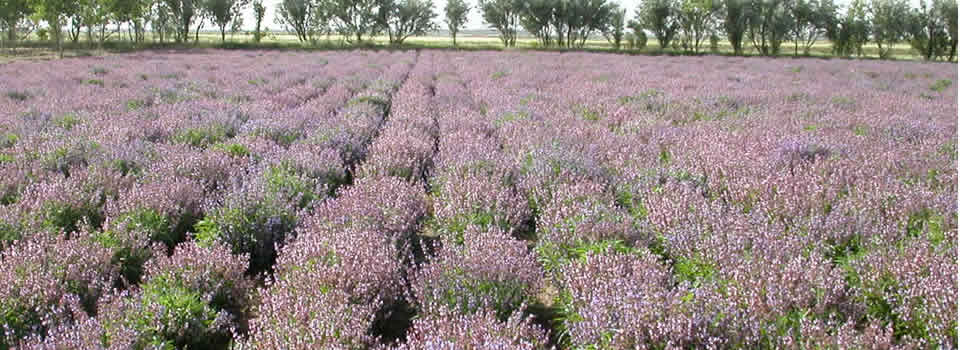As defined inthe EU directive 178/2002/EC producers of food – and thus also of food supplements – are now obliged to make the origin of herbal raw materials traceable. The directive is based on the WHO-Guideline "Good Agricultural and Collection Practice”, which defines clear rules for the treatment of raw materials of herbal origin.
In an analogous way the very same rules also apply to the registration of herbal medicinal products. In future registration dossiers in CTD format exact details regarding geographic origin, cultivation and harvesting methods as well as drying, storage and transport conditions will have to be indicated.
The new directives do not only translate into new trouble for the producers, but also into new chances for a new positioning in the areas of quality, safety, protection of the environment and social engagement in third world countries.
Download: Poster, 2004 International Congress on Natural Products Research, Phoenix (USA), July 31 - August 4, 2004
{phocadownload view=file|id=6|target=s}
Traceability projects
The quality of herbal raw material starts in the field. Unfortunately the information regarding the origin of natural compounds is often lost in the complex trading channels. E.g., Spanish saffron (Crocus sativus) is more often than not a product from the Middle East, "Siberian ginseng" (Eleutherococcus senticosus) comes from China or Korea, and the South African plant Hoodia gordonii is often collected from the species Opuntia ficus-indicain Mexico, which is, however, devoid of active constituents.Only recently, new EU directives concerning food and herbal drugs called for the identification of the origin of the herbal substance, based on the WHO guideline "Good Agricultural and Collection Practice". Through our activities and our international contacts we are, with a relatively small effort, able to organise projects aimed on the traceability and quality of herbal raw materials. Medicinal and Aromatic Plants R&D has been organising corresponding projects in the sense of these guidelines for decades.
Projects aimed on the avoidance of adulterations
Adulterations are a consequence of obscure commercial pathways, especially when the herbal substance is either very rare or very expensive.
Examples
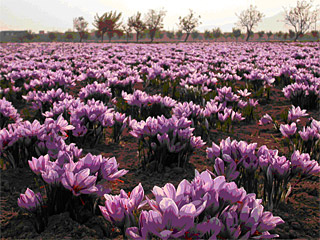 Saffron (Crocus sativus) is one of the most expensive spices worldwide. Correspondingly, the number of adulterations described for saffron is rather high. With saffron originating exclusively from cultivation, projects aimed on securing
Saffron (Crocus sativus) is one of the most expensive spices worldwide. Correspondingly, the number of adulterations described for saffron is rather high. With saffron originating exclusively from cultivation, projects aimed on securing
quality and traceability of various cultivars of saffron are the obvious solution.
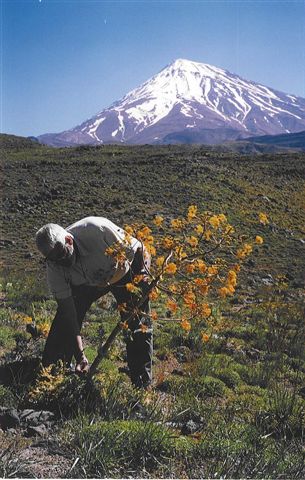 Galbanum, a resin of Ferula gummosa mainly used in cosmetology, but also known for its medicinal virtues, is frequently adulterated with resins from Dorema ammoniacum or Ferula asa-foetida. Galbanum exclusively originates from wild crafting. We organised a project of controlled collection under conditions securing the survival of the plant as well as the purity of the raw material.
Galbanum, a resin of Ferula gummosa mainly used in cosmetology, but also known for its medicinal virtues, is frequently adulterated with resins from Dorema ammoniacum or Ferula asa-foetida. Galbanum exclusively originates from wild crafting. We organised a project of controlled collection under conditions securing the survival of the plant as well as the purity of the raw material.
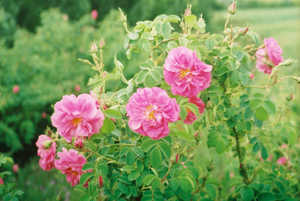
Rose water from Damascene rose (Rosa damascena) neither originates from Damascus, nor - frequently - from roses. The true origin of Damascene rose is Persia. Rose water is frequently prepared by mixing water with synthetic aromatic compounds. Likewise, inferior rose oil is often "ameliorated" by various synthetic or natural additives. We are able to organise authentic and high quality rose water and rose oil in high quantities- with full traceability.
Projects aimed on securing traceability of herbal raw material are not only a chance for the optimisation of raw material quality, but also a chance to get rid of typical adulterants in the commercial channels.
Cultivation and organisation of controlled collection
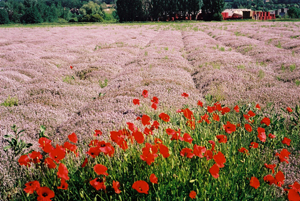 According to EU directive 178/2002/EC a complete documentation of the origin of plant material used for the production of food (and also of food supplements) is required. Similar requirements can be found in the registration process of herbal medicinal products.
According to EU directive 178/2002/EC a complete documentation of the origin of plant material used for the production of food (and also of food supplements) is required. Similar requirements can be found in the registration process of herbal medicinal products.
Origin and quality of the herbal raw material can be guaranteed in projects oriented at the WHO guideline "Good Agricultural and Collection Practice". According to the specific needs this can be reached through projects of controlled cultivation, or otherwise controlled collection. Both types of projects secure the quality of herbal raw material, help to avoid accidental adulterations, and stop fraudulent adulterations in the trading channels.
Publications
- M. Schmidt, M. Thomsen, G. Betti: Quality of herbal raw material: a challenge. Curr. Sci. 88(3): 336 (2005).
- M. Schmidt, M. Thomsen, G. Betti: WHO releases “Guidelines on Good Agricultural and Collection Practices” of Herbs. HerbalGram 65: 22-24 (2005).
- M. Schmidt, G. Betti: Betrachtungen zum Thema Nahrungsergänzung: Sicherheit und Qualität. Lebensmittel und Recht 10(4): 109-115 (2006).
Posters
- M. Schmidt, M. Thomsen, G. Betti: The new WHO guidelines and EC directives on traceability of herbal raw material: a chance for the amelioration of quality and safety of medicinal plant raw material. International Congress on Natural Products Research (ICNPR), Phoenix (Arizona, USA), 1.-4. August, 2004.
- M. Schmidt, G. Betti: Herbal medicine and herbal nutritional supplements: Quality issues and consumer safety. 25èmes Journées Internationales Huiles Essentielles et Extraits, Digne-les-Bains (France), 14.-15. September 2006.
Oral presentations
- M. Schmidt: Quality assurance in phytotherapy: From the medicinal plant to the finished product. Middle East Natural Products Expo, Dubai (UAE), 1. December 2003.
- M. Schmidt: Rohstoffqualität in der Praxis: Probleme und Lösungen. GCRN-Symposium: Qualität pflanzlicher Rohstoffe – Perspektiven für die Industrie, Munich (Germany), 14. June 2005.
- M. Schmidt: Neben- und Wechselwirkungen bei Phytopharmaka: Aktuelle Beispiele und Hintergründe für die Beratung in der Apotheke. Fortbildung des Bundesverbandes der Pharmazeutisch-Technischen Assistenten (BvPTA), Munich (Germany), 1. December 2005.
- M. Schmidt: Les compléments alimentaires pour une meilleure qualité de vie – efficacité, qualité et sécurité. 25èmes Journées Internationales des Huiles Essentielles et Extraits, Digne-les-Bains (France), 15. September 2006.
- M. Schmidt: Nebenwirkungen durch minderwertige Qualität: Kundenaufklärung zu pflanzlichen Präparaten erforderlich! Seminar „Apotheke 3000 – Neue Konzepte für die moderne Apotheke“. 40. Medizinische Woche, Baden-Baden (Germany), 1. November 2006.
- M. Schmidt: Nahrungsergänzungsmittel zwischen Kommerz und Wissenschaft: Chancen für die Beratung. Seminar „Apotheke 3000 – Neue Konzepte für die moderne Apotheke“. 40. Medizinische Woche, Baden-Baden (Germany), 1. November, 2006.
- M. Schmidt: Betrachtungen zum Thema Nahrungsergänzung: Sicherheit und Qualität. Deutscher Rechtstag für Lebensmittel und Nahrungsergänzungsmittel, Frankfurt (Germany), 14. November 2006.
- M. Schmidt: Medicinal plants, phytomedicines and food supplements: Quality, safety and efficacy. Seminary at the University of Petra, Amman (Jordan), 23.-28. February 2008.
- M. Schmidt: From Plant to Drug: Development of rational herbal medicinal products. University of Petra, Amman, and University of Amman, As Salt (Jordan), 6.-8. April 2009.

